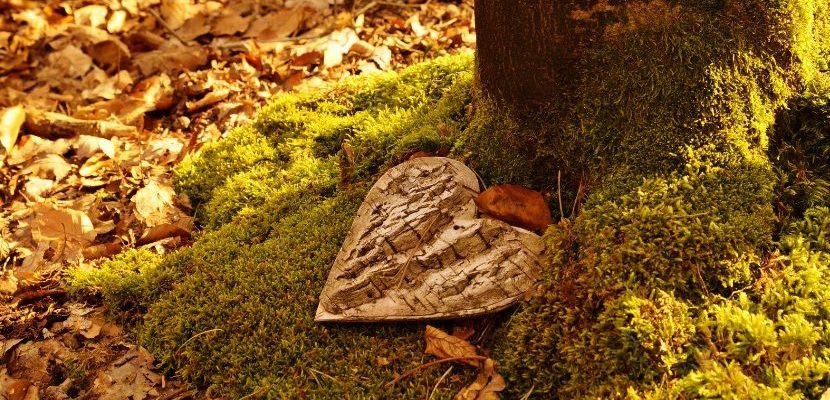Humusation, cryomation, resomation. Do these terms mean anything to you? However, these new burial concepts are among the avenues favored by some for a slightly greener funeral. They are even already authorized in certain countries or have been submitted to the study of a bioethics committee, as in our Belgian neighbours.
For a return to the earth, the humusation technique in the natural environment consists of placing the body in a compost heap so that it disintegrates after a year and turns into humus. In the United States, six states already authorize “terramation”, a method of human composting, but this time in an express version, the process being accelerated in a metal coffin.
Even faster, resomation allows a corpse to dissolve when it is immersed in a solution of water and potassium hydroxide heated to 160 or 180 degrees in a few hours. As for the cyromation, also called promession, it consists in placing the body of the deceased in liquid nitrogen at a temperature close to – 200°C before reducing it to the state of dust. So many more eco-responsible methods that are on the rise.
New techniques which are added to the traditional burials and cremations, less sober ecologically, but which remain the only legal ones in France, insists Mathieu Touzeil Divina, professor of public law at the University of Toulouse-Capitole. This initiator of the “Treaty of the new rights of death” will discuss this Thursday evening at the Museum what it is possible to do or not in terms of “green funerals”.
Human remains, an object like no other
“The destination of human remains is considered by French law as a matter of public health. Not only for health issues but also for dignity. The law is there to protect, especially the weakest, whether children, those who suffer or those who cannot express themselves. In this case, the human remains cannot express themselves”, recalls the teacher straight away.
It is therefore out of the question to treat human remains as one would treat any object or waste. “But the difficulty is that in law you can only be a subject of law, therefore an actor in law and benefit from subjective rights, if you are a living person. Human remains are certainly human but not alive, they are no longer qualified as a person in law but as an object. A corpse or human ashes is an object. And because it is an object, the question arises as to whether we can own them”, specifies this specialist.
Burial, organic or not, but not anywhere
Thus, for a long time, human skulls of complete strangers sat on desks or in cupboards. Until 2008, when the Sueur law was adopted. “Since then there are only two possible destinations: either a burial of the ashes or the body, or a scattering of the ashes. There are no other possibilities. And the dispersion cannot be done just anyhow. To prevent us from falling into certain excesses, we prefer to prohibit many more things, ”notes Mathieu Touzeil-Divina.
It is therefore now impossible to keep grandpa’s ashes on the fireplace. But on the other hand, it is quite feasible to disperse them in the mountains where he was hiking or in the sea, as long as it is declared and they are all scattered in the same place. It is even now possible today in the stratosphere.
On the other hand, if the ashes are placed in an urn, biodegradable or not, then buried in the ground, this can only be done in a fixed place and especially on the public domain. Since 2008, it has been impossible, except on prefectural derogations, to be able to bury ballot boxes on private sites. In particular in the rare funerary parks that had emerged in France that had emerged, such as the Trees of Memory, in Pruillé, or even the Gardens of Memory in Brittany.
The importance of historical and religious context
These regulatory issues have also slowed down the very advanced project of the cinerary forest of Arbas, in the south of Haute-Garonne, where nature lovers had the possibility of reserving their location under a tree, in the middle of the mountains. A first in France, suspended for the time being, which was inspired by what our neighbors have been doing for some time. “In Germany there are around fifty cinerary forests and there are also some in England, but they are managed and put forward by the church”, advances Clément Legrand, author of a dissertation in anthropology on the relationship with the deceased and to death in natural burial grounds.
For those who have looked at the practices in vogue in recent years, from the development of cardboard coffins to new, much more technological practices, the context is important. “The scattering of ashes was thus popularized in the sixties, with a desire to find other solutions when the church gave its approval for cremation. We have gone from 5% of the deceased cremated in 1960 to 40% today and 60% who say they now want to be cremated and dispersed, ”he continues, pointing to the role of religion, which is always significant on these issues.
If the funeral world has been overtaken by ecological issues, it has also been overtaken by more down-to-earth things, such as the financial aspect. A few years ago, the cellars were under concession in perpetuity, which no longer exists. Unlike nature, which offers endless possibilities, burials have a limited number of places and placing in coffins in solid wooden coffins is expensive.
But if private memory garden projects developed at the end of the 1990s, it was, according to Clément Legrand, less for ecological questions “than to be outside cemeteries that are sometimes in disrepair and impersonal”. Today, the wave around green funerals could one day bring them back into fashion. In January, a bill requiring the experimentation of humusation was thus carried by several French deputies. A subject which is therefore far from being definitively buried.

